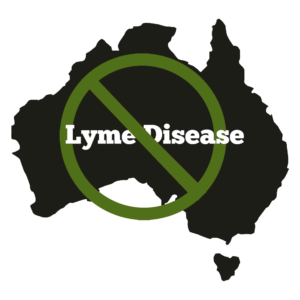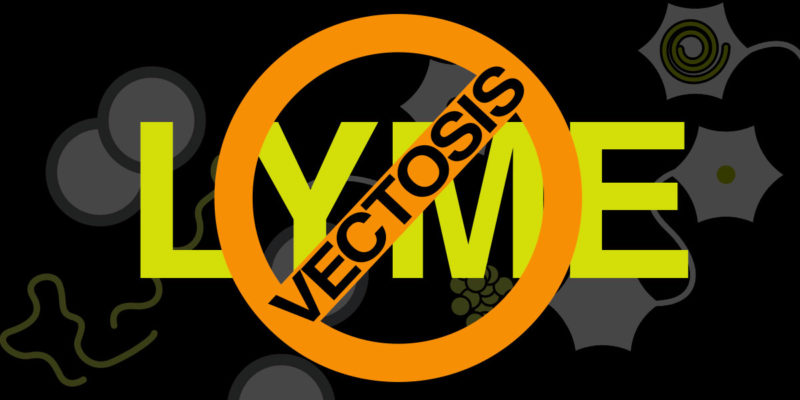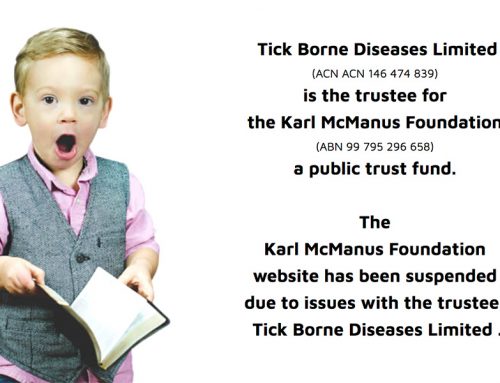Vectosis – Changing the Lyme Disease conversation in Australia
What is Lyme Disease?
According to the US Centre for Disease Control (CDC)
Lyme disease is caused by the bacterium Borrelia burgdorferi and is transmitted to humans through the bite of infected blacklegged ticks. Typical symptoms include fever, headache, fatigue, and a characteristic skin rash called erythema migrans. If left untreated, infection can spread to joints, the heart, and the nervous system.
(https://www.cdc.gov/lyme/index.html)
Lyme disease is a bacterial infection caused by Borrelia bacteria. The condition of being infected with Lyme Disease is called Borreliosis in many parts of Europe.
An inflammatory infection it is commonly transmitted to humans through tick bites and other blood sucking insect bites. Ticks pick up the bacteria by biting infected animals known as Hosts, and then pass it on to other animals, including human hosts.
There are over 188 different varieties of Borrelia identified worldwide but only three of those varieties fall into the Lyme Disease grouping.
Lyme Disease has been identified in eastern USA and parts of Europe.
The biggest grouping of Borrelia is Relapsing Fever which occurs in nearly every world territory.
 Does Lyme Disease Exist in Australia?
Does Lyme Disease Exist in Australia?
The current view of the Australian government is that there is no evidence for the existence of indigenous form of classical Lyme disease (Lyme disease, Lyme Borreliosis or lymes) in Australia. However, there is evidence of a uniquely Australian relapsing fever and several other infections derived from blood sucking insects that give rise to “Vectosis”. A fact sheet on Lyme disease is available on the NSW Health website.
The Federal Government list Lyme Disease on their schedule of infectious diseases (http://www.health.nsw.gov.au/Infectious/Pages/a-to-z-infectious-diseases.aspx) . Furthermore they acknowledge it can be contracted while visiting endemic areas.
Changing the topic of conversation
The lack of evidence for an indigenous form of classical Lyme disease and the discovery of uniquely Australian varieties of Relapsing Fever Borrelia reaffirm the view that Australians who have been infected in Australia and have been diagnosed with Lyme Disease may in fact be infected with a uniquely Australian variety of Relapsing Fever.
Because of the emotive barriers raised, in Australia, when Lyme Disease is mentioned many other co-infections from blood sucking insect bites are being overlooked.
For this reason the term “Vectosis” has been adopted to engender greater objectivity and more relevance into the discussions and research surrounding Vector borne diseases.
“We know something is making people sick, what is it?”
What is Vectosis?
Vectosis is any condition originating from or caused by the bit of a bloodsucking Arthropod.
The bloodsucking Arthropods, known as Vectors, that are commonly responsible for any of the Vectosis conditions are:
- Tick
- Mosquitoes
- Midge
- Sand flies
- Fleas
- Tsetse flies
- Black flies and
- many other blood sucking insects
Vectosis describes any of the following conditions regardless of the geographical incidence:
Condition |
Common Vector |
| Babesia | Ticks |
| Bartonella | Ticks |
| Borreliosis | Ticks |
| Chagas disease (American trypanosomiasis) | Triatomine bugs |
| Chikungunya | Mosquitoes |
| Crimean-Congo haemorrhagic fever | Ticks |
| Dengue fever | Mosquitoes |
| Ehrlichia | Ticks |
| Japanese encephalitis | Mosquitoes |
| Leishmaniasis | Sandflies |
| Lyme disease | Ticks |
| Lymphatic filariasis | Mosquitoes |
| Malaria | Mosquitoes |
| Mycoplasma | Ticks |
| Onchocerciasis (river blindness) | Black flies |
| Plague (transmitted by fleas from rats to humans) | Fleas |
| Relapsing fever (borreliosis) | Ticks |
| Rickettsial diseases (spotted fever and Q fever) | Ticks |
| Rickettsiosis | Fleas |
| Rift Valley fever | Mosquitoes |
| Ross River Fever | Ticks |
| Sandfly fever (phelebotomus fever) | Sandflies |
| Schistosomiasis (bilharziasis) | Aquatic snails |
| Sleeping sickness (African trypanosomiasis) | Tsetse flies |
| Tick-borne encephalitis | Ticks |
| Tularaemia | Ticks |
| West Nile fever | Mosquitoes |
| Yellow fever | Mosquitoes |
| Zika | Mosquitoes |
Vectosis “account for more than 17% of all infectious diseases, causing more than 1 million deaths annually”[1].
VECTOSIS-A (Australia)
Vectosis-A is a Vectosis condition originating from Australian Arthropods and particularly uniquely Australian pathogens such as the uniquely Australian relapsing fever bacteria and Australian Rickettsial species. It does not include conditions that have not been identified in Australia, such as Lyme disease or Rocky Mountain spotted fever which are common to the USA.
Condition |
Common Vector |
| Babesia | Ticks |
| Bartonella | Ticks |
| Borreliosis | Ticks |
| Dengue fever | Mosquitoes |
| Ehrlichia | Ticks |
| Malaria | Mosquitoes |
| Mycoplasma | Ticks |
| Q-Fever | Ticks |
| Relapsing fever (borreliosis) | Ticks |
Rickettsial diseases
|
Ticks |
| Ross River Fever | Ticks |
Symptoms
- An infection can present with some of the following symptoms:
- Bulls eye rash
- Severe headache
- Fever
- Chills
- Muscle aches or pain
- Nausea
- Confusion
- Meningitis
- Abdominal pain
- Diarrhoea
- Vomiting
Testing
There are currently no standard tests available for some Vectosis conditions.
The Vectosis-A Relapsing Fever has no specific blood test anywhere in the world. Relapsing Fever has been known to show positive to one or more of the traditional lyme disease tests incorrectly leading a suffer to believe they have lyme disease.
[1] World Health Organisation – Media Centre – Vector-borne diseases. February 2016
http://www.who.int/mediacentre/factsheets/fs387/en/







Thanks for your work. As a ross river fever sufferer and advocate for improved research into infectious disease, I see the value of your research and efforts. From my own experiences working within the scientific research field and academic studies, I know too well that scientific expertise constantly requires pushing the boundaries of the unknown.
I’ve heard of instances of sand (march) flies transmitting Ross river virus to individuals within this community and an instance of a mosquito transmitting not just viruses, but a bacterial infection experienced by one individual whom I know personally as a family friend.
I truly believe we are on the cusp of a larger issue, one that is largely hidden below the current level of both scientific knowledge and understanding.
Hopefully you recieve generous philanthropic donations to help support your work into the short and long term future.
Perhaps you might consider developing a research focused phone application to aide you and the community in tracking symptoms of vectosis.